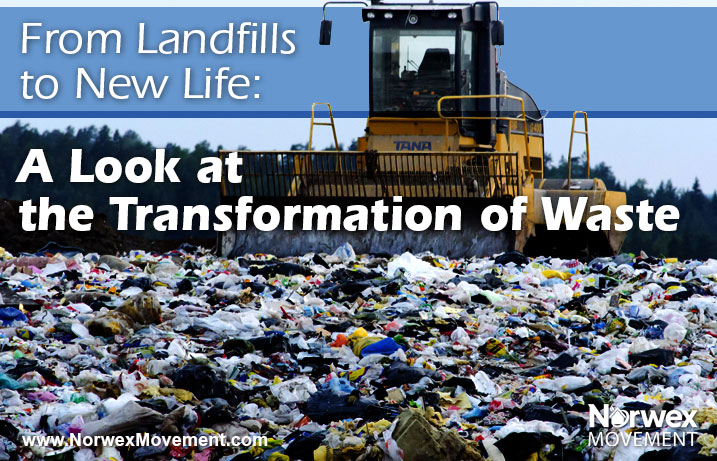

Reduce, reuse, recycle. We all know it and do it to the best of our ability, but we’re also still learning. For example, have you ever stared at a recycling bin wondering if that yogurt cup is really acceptable for that receptacle? Should you rinse it out first? And what’s the deal with shimmering or coated items, like chip bags? The bottom line is, not all plastic is created equal, which makes recycling more complicated and less gratifying at times. Although recyclables vary city by city, check out this simple list of recycling do’s and don’ts as a quick reminder.
What about the non-biodegradable offenders that linger in landfills for decades? The not-so-easy-to-recycle waste? Recently, we learned about TerraCycle and its mission to eliminate the idea of waste entirely and convert consumers to “durable over disposable” thinking, as seen in their newly piloted Loop System.
And it’s working. The Trenton, NJ, company now transforms one to five million kilos (2 million to 11 million pounds) of hard-to-recycle waste into renewed resources each week. They’re able to recycle things like cleaning products, beauty products, pens, cigarette butts, toothbrushes and even chip bags. But how exactly does TerraCycle manage to transform the landscape of landfills while making a profit?
Basically, the majority of TerraCycle’s revenue is provided by brands, manufacturers and retailers who partner with them to recycle industrial waste. These partnerships provide a platform for free recycling to consumers who use their goods.
Additionally, TerraCycle partners with waste management companies to identify potential resources that are traditionally considered too costly to recycle. Once collected, these materials can be integrated back into products. This video explains a little more about their incredible process.
So far, more than 202 million people in 21 countries have participated in TerraCycle’s renewable program. At no cost to the public, the program accepts waste to be reused, upcycled (like this backpack made from juice pouches or these coasters made from circuit boards), or recycled at multiple collection points.
Terracyle is in the business of “recycling the non-recyclable.” Here are just a few of the items they are using to create new products:
Cigarette waste is shredded and separated into plastics, papers and organics for reusing in things like building materials.
Latex paints are separated into water and solids, which are then run through an extruder. The water is stripped from the materials as water vapor, and the solids are melted and formed into pellets, which can be used as a base for colorants or as additives to other recycled polymers.
Organics are used in industrial and commercial fertilizers.
Fibers are treated to separate out coatings (like wax and plastics). The separated fiber is recycled into new paper products or composted if recycling is not possible. The resulting plastics are recycled into plastic polymers.
E-waste is mechanically and manually separated into metals and plastics. Any salvageable e-waste is refurbished and re-used.
Cooking oils are consolidated and turned into biodiesel or mechanical lubricants.
Resources:
Styrofoam is also a big problem with few places to recycle. I have seen products made of it though.
I recently watched a Youtube Documentary about something similar to a meal worm that can break Styrofoam into organic matter. The things that Science are discovering are wonderful. Someone just needs to put the process into effect for a larger scale solution. 🙂
Uplifting news.
Enjoyed the read.
I have looked into Terracycle very recently and think they are doing great things! I am trying to get Cigarette Receptacles installed in our small town, am arranging an Electronics Drive to benefit our Cub Scout Program, and I just want to invest in every Zero Waste box they have! Lol.
We can all learn from our grandparents or great grandparents that lived during the depression. They were experts at recycling because there was such a shortage of goods. My grandmother reused elastic bands, wiped down aluminum foil and folded it up neatly to reuse again, rinsed out cans bundled up cardboard and newspaper. I admire her for how she thought about and cared for the environment. I myself am going through items in my house that are still in good condition that I do not use and repurposing, rehoming, reusing, repairing, etc.
I am super interested in Bio Fuels and have visited a company that uses corn stalks to produce bio fuel. One thing that we have to figure out is how to make a more efficient electric car that does well in the northern regions of Canada. I live in Northern BC and the electric and hybrid cars just do not do well with the cold up here.
Christine, thanks for your comment. It sounds like your grandmother definitely knew how to get the most out of things at hand. What a great example for you as you go through the items in your home—and now for us all; thanks so much for sharing. Bio fuels are definitely an interesting topic; we will keep them in mind for a future blog.